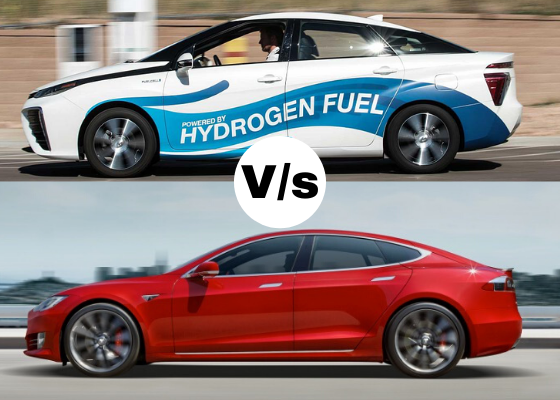When utility services are unavailable, batteries and fuel cells can be used as power sources, and both provide power without a rotating generator. However, there are essential differences in the internal structure and capabilities of fuel cells and batteries. Simply put, the battery provides the energy it previously stored, and the fuel cell converts the energy from fuel to electrical energy.
Traditional generators also use fuel to generate electricity, but fuel cells directly generate electricity through chemical reactions. On the other hand, the generator relies on fuel combustion in the piston to create rotational motion, and the voltage supply comes from the interaction of the two magnetic fields in the rotor and stator. Comparison of

battery and fuel cell A significant difference in operation between
battery and fuel cell is that the battery has a charge and discharge cycle, while fuel cells can generate electricity continuously as long as their fuel is available.
1. Batteries are helpful in applications that can be charged. This can be achieved through grid power supply or renewable energy power generation systems. When used with renewable energy, the battery can provide a power source independent of the external power source.
2. When the battery cannot be charged, the fuel cell is a better choice. Fuel cells and their respective fuel tanks are more compact and lighter than fully charged battery packs for a given amount of power.
Please note that the fuel cell can be refueled while it is running because the fuel tank is separate. On the other hand, the battery cannot be charged and discharged at the same time. The only exception is the flow battery, which has the characteristics of both traditional batteries and fuel cells:
1. Energy is stored as the charge difference between two electrolyte tanks.
2. When these electrolytes interact through the membranes in a flow battery, electricity is generated.
How can fuel cells reduce emissions from buildings?
The fuel cell is designed for various fuels, including propane, natural gas, diesel, and hydrogen. However, its power generation efficiency is twice that of conventional generators, and there is no noise or vibration. Emissions from fuel cells are also much lower than those from other power generation systems:
| ELECTRICITY GENERATION SYSTEM | TYPICAL CO2 EMISSIONS PER MWH |
| Coal-fired generator | 1000 kg |
| Oil-fired generator | 750 kg |
| Natural-gas-fired generator | 500 kg |
| Fuel cell | 400 kg |
In the case of hydrogen fuel cells, there are no CO2 emissions for the simple reason that the fuel input contains no carbon (pure hydrogen gas). The only by-products are water vapor and heat. The drawback of this technology is that hydrogen is very difficult to store and handle.
Types of Fuel Cells
There are many ways to build a fuel cell, all accomplishing the same result: producing electricity from a fuel through a chemical reaction. Each type of fuel cell comes with advantages and limitations.
| TYPE OF FUEL CELL | BRIEF DESCRIPTION | PROS | CONS |
| Proton Exchange Membrane (PEM) | Uses a polymer electrolyte. One of the most developed and common fuel cell types. | – Compact – Long life – Quick response – Mature technology | – Expensive – Complex – Uses specialized fuel |
| Alkaline Fuel Cell (AFC) | Uses an alkaline solution as the electrolyte. Preferred type of fuel cell for aerospace applications. | – High efficiency – Low cost manufacturing and operation – Simple system with no compressors – Mature technology | – Bulky – Requires pure hydrogen and oxygen – Pollutant sensitivity limits applications |
| Molten Carbonate Fuel Cell (MCFC) | Uses a molten carbonate solution as the electrolyte. | – High efficiency – Fuel compatibility – Suitable for large-scale applications, and combined heat and power (CHP) | – Susceptible to corrosion – Slow start – Short life |
| Phosphoric Acid Fuel Cell (PAFC) | Uses phosphoric acid as the electrolyte. First type of fuel cell to become commercial. | – Tolerates fuel impurities – Suitable for large-scale applications and CHP | – Susceptible to corrosion – Bulky – Low efficiency – Short life |
| Solid Oxide Fuel Cell (SOFC) | The electrolyte is a solid oxide or ceramic. | – High efficiency – Fuel compatibility – Suitable for large-scale applications and CHP | – High temperature – Susceptible to corrosion – Slow start – Short life |
Concluding remarks
Fuel cells make it possible to generate electricity from fuel without burning, which is more efficient than traditional power generation systems and reduces emissions. Since they operate above ambient temperature, their heat emissions can be recycled for space heating and domestic hot water applications.
When deciding between a battery and a fuel cell, consider the available energy input. The battery needs to be charged, and the fuel cell requires a compatible fuel. Get qualified professional advice to determine which system is best for you or benefit from both.


